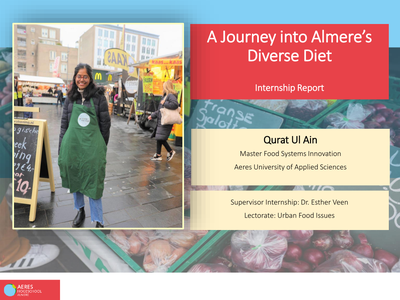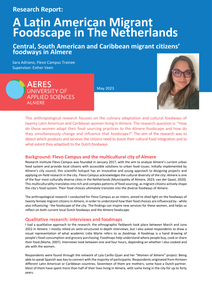Duurzaamheidsbalans: verschillende onderzoeksrapporten laten zien dat Europese grondstoffen voor eiwit in veevoer milieuvriendelijker zijn dan soja uit Zuid-Amerika. Het is daarom vanuit milieu-oogpunt wenselijk om meer regionaal geteeld eiwitrijk veevoer te gebruiken in Nederland.Ketenaanpak: De Raad meent dat voor het oplossen van de geïdentificeerde knelpunten een ketenaanpak essentieel is. Niet slechts één partij heeft de oplossing. Momenteel ontbreekt verbinding en kennis in de keten. Voor deze verbinding is het nodig dat alle betrokken partijen met elkaar open het gesprek aangaan en elkaar betrekken bij het oplossen van ieders knelpunten.Voornaamste knelpunten 1. HANDEL: Door afspraken zoals Blair House agreement en GATT is eiwit van buiten de EU goedkoop en is een achterstand opgelopen in kennis over en ervaring met Europese eiwitteelt. 2. TEELT: De teelt van eiwitgewassen is relatief onbekend bij Nederlandse boeren, rassen zijn verouderd of onvoldoende beschikbaar en het saldo is in veel gevallen nog te laag, waarbij positieve effecten onbekend of ondergewaardeerd zijn.3. VERWERKING en 4. SCHAAL: Regionaal eiwitrijk veevoer is onvoldoende beschikbaar, vooral omdat verwerkingsmogelijkheden nog beperkt zijn en de kleinere schaal extra kosten met zich mee brengt. Dit maakt tevens investeringen onaantrekkelijk.5. MARKT: Regionaal geteeld eiwit leidt als gevolg van een hogere kostprijs tot duurder veevoer. Het halen van een meerprijs bij de consument voor producten geproduceerd met regionaal veevoer lukt (nog) niet, mede omdat er onvoldoende bewustzijn is over de problematiek. Maatschappelijke organisaties, retail en de overheid spelen hierin een rol.
DOCUMENT

This text is structured as follows. Section 1 concerns the background to this public lecture: the fact that social participation is becoming increasingly important in our society. This is evident, for example, from the way we are evolving from a protective welfare state into an activational, participative society. This development has consequences for the social sector and therefore also for the professionals who work in it. Social work professionals are not necessarily expected to identify or solve participation problems; they are seen as intermediaries who enable citizens to take responsibility themselves. Social work professionals are therefore expected to provide the individual applicant with less direct support and to focus more on strengthening the social networks of people and the social contexts in which they find themselves. Section 2 connects sections 1 and 3, but may also be read independently. It is about the fact that social work professionals are not yet in the habit of providing systematic insight into the results of their actions, while policy makers, for example, are increasingly looking to them precisely for this. First of all, I set out the reasons why it is so important to make the products of their interventions more visible, not only to policy makers, but also to social work professionals themselves and to the customers/citizens who depend on them. Secondly, I set out how the results of social interventions can be made more visible than they are at present; and what research can contribute. In this, I advocate a change in thinking: from thinking in terms of the evidence to thinking in terms of the evident. This argument forms the basis of the type of research that is being taken up from within the research group. In section 3, I describe a number of research projects that will be conducted during my tenure. I also set out the main proposition of this address, which states that social work professionals should do more with the knowledge that peoples behaviour is determined to a significant degree by contexts. In particular, social contexts could play a bigger role in promoting citizen participation. At present, social work professionals normally intervene directly in peoples behaviour, such as with therapies for combating problem behaviour. Interventions in a broader, social, context are rare. Why is this? And couldnt citizen participation be more effectively promoted by these means than through direct behavioural interventions? I put forward four propositions in this regard, and explain each of them in reference to one of the current research projects within the research group. With this, in combination with the general outlines of the research presented in section 2, I hope to provide a clear and inspiring overview of the research that will be carried out within the research group in the coming years. Finally, in section 4, I will discuss the significance of the research group to the faculty of Society and Law at Hogeschool Utrecht University of Applied Sciences, and to parties outside of Hogeschool Utrecht University of Applied Sciences.
DOCUMENT

There is a strong relation between food and identity. Especially when people move to another country, traditional food (or simply food from their country of origin), symbolizes a link with culture, communityand ethnic identity. As people move around the globe they introduce new foods in the places they land. Almere is becoming one of the largest majority minority cities of the Netherlands. Walking around thecity, the diversity of food ingredients and eating cultures as shown in shops and restaurants is immediately clear. The aim of this project was to get an insight into the diets of the residents of Almere so as to learn about eating patterns in a multicultural city and how multiculturality affects the diets of both newcomers and people who have been living here for generations.
DOCUMENT

COTOPAXI is an ANDEAN lupin which has obtained Plant Breeder Rights by Vandinter Semo BV, the Netherlands. COTOPAXI is rich in protein (45%) and oils (20%). COTOPAXI will positively contribute to the plant-based protein transition in hte Netherlands and Europe.
MULTIFILE

Climate change is undermining the importance and sustainability of cooperatives as important organizations in small holder agriculture in developing countries. To adapt, cooperatives could apply carbon farming practices to reduce greenhouse gas emissions and enhance their business by increasing yields, economic returns and enhancing ecosystem services. This study aimed to identify carbon farming practices from literature and investigate the rate of application within cooperatives in Uganda. We reviewed scholarly literature and assed them based on their economic and ecological effects and trade-offs. Field research was done by through an online survey with smallholder farmers in 28 cooperatives across 19 districts in Uganda. We identified 11 and categorized them under three farming systems: organic farming, conservation farming and integrated farming. From the field survey we found that compost is the most applied CFP (54%), crop rotations (32%) and intercropping (50%) across the three categorizations. Dilemmas about right organic amendment quantities, consistent supplies and competing claims of residues for e.g. biochar production, types of inter crops need to be solved in order to further advance the application of CFPs amongst crop cooperatives in Uganda.
DOCUMENT

Analyse the results from a representative selection of the supply chain studies for school feeding programmes in Kenya, Ghana and Mali, and make specific suggestions for interventions that can efficiently include SHF in the supply chains.
DOCUMENT

Based on the theory of embodied cognition we developed NOOT, at tangible tool that allows marking audio-moments during creative sessions. A detailed analysis of using NOOT in practice lead to a reconceptualization of NOOT within processes of external scaffolding. It also spurred a new design project focused on reflection during group sessions
DOCUMENT

It has been shown that the identification of many foods including vegetables based on flavour cues is often difficult. The effect of providing texture cues in addition to flavour cues on the identification of foods and the effect of providing taste cues only on the identification of foods have not been studied. The aim of this study was to assess the role of smell, taste, flavour and texture cues in the identification of ten vegetables commonly consumed in The Netherlands (broccoli, cauliflower, French bean, leek, bell pepper, carrot, cucumber, iceberg lettuce, onion and tomato). Subjects (n ¼ 194) were randomly assigned to one smell (orthonasal), flavour (taste and smell) and flavour-texture (taste, smell and texture). Blindfolded subjects were asked to identify the vegetable from a list of 24 vegetables. Identification was the highest in the flavour-texture condition (87.5%). Identification was significantly lower in the flavour condition (62.8%). Identification was the lowest when only taste cues (38.3%) or only smell cues (39.4%) were provided. For four raw vegetables (carrot, cucumber, onion and tomato) providing texture cues in addition to flavour cues did not significantly change identification suggesting that flavour cues were sufficient to identify these vegetables. Identification frequency increased for all vegetables when perceived intensity of the smell, taste or flavour cue increased. We conclude that providing flavour cues (taste and smell) increases identification compared to only taste or only smell cues, combined flavour and texture cues are needed for the identification of many vegetables commonly consumed in The Netherlands.
DOCUMENT

This is a summary of Sara Adriano's thesis and internship. This anthropological research focuses on the culinary adaptation and cultural foodways of twenty Latin American and Caribbean women living in Almere. The research question is: “How do these women adapt their food sourcing practices to the Almere foodscape and how do they simultaneously change and influence that foodscape?” The aim of the research was to detect which products and services the citizens need to boost their cultural food integration and to what extent they adapt(ed) to the Dutch foodways.
DOCUMENT
